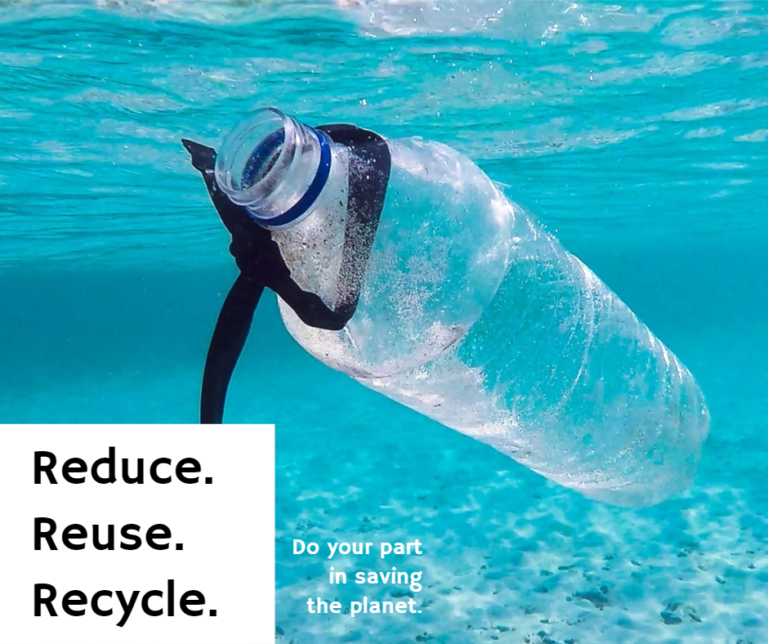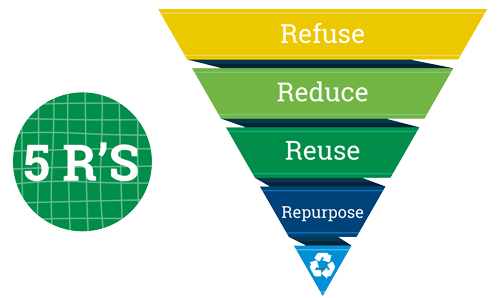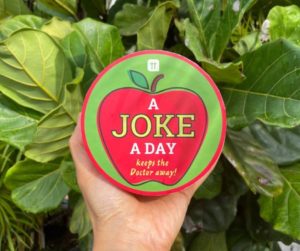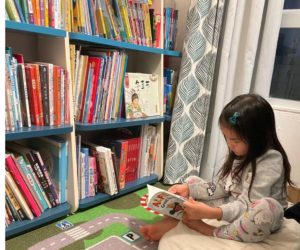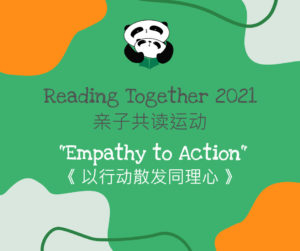If you have children of school-age, you probably have realised some of the things that you learnt as a child have evolved, and it is so important to keep an open mind and continue learning with our children and for ourselves. I have many personal stories on these, but I want to share with you today one of my recent encounters related to climate change and recycling.
Let me ask you a question, when your child ask you about recycling what springs to mind?
Since the 2021 United Nations Climate Change Conference (commonly known as COP26), more media coverage and discussion around the topic are happening around us, and we have been encouraged by various authorities including schools that we should recycle more. You might have heard of the slogan 3Rs: Reduce, Reuse, Recycle, which seems to make sense until recently when I was reading up on the topic, I found out the slogan has evolved to 5Rs: Refuse, Reduce, Reuse, Repurpose, Recycle!
I was intrigued but also annoyed from this finding. This is because not long ago, I worked with Axel on a school poster about the things we could do to help combat climate change, and we used the ‘outdated’ 3Rs slogan on the poster. This prompted me to re-think about recycling – why do we need to do it (apart from being told to), what is the ultimate goal we are trying to achieve, and why has the slogan evolved?
What caused global warming anyway?
One of the key goals from COP26 is to limit the increase in global average temperatures to below 2°C above pre-industrial levels and pursuing efforts to limit it to 1.5°C [1]. According to scientific data, our long-term shift in temperature rise is mainly caused by various human activities that release excessive greenhouse gases (GHG) such as carbon dioxide and methane. These gases are good at absorbing solar energy and trapping heat within the Earth’s atmosphere hence giving rise to a constant shift in a warmer average temperature, i.e. global warming.
With my engineering and problem-solving hat on, logic follows that to slow down temperature rise we must reduce emissions of GHG, and one should understand what contributed to these harmful GHG to focus efforts. Following this path I found this insightful infographic by ‘Our World in Data’ who is a research team based at the University of Oxford, which is a great way to understand this GHG big data in one chart:
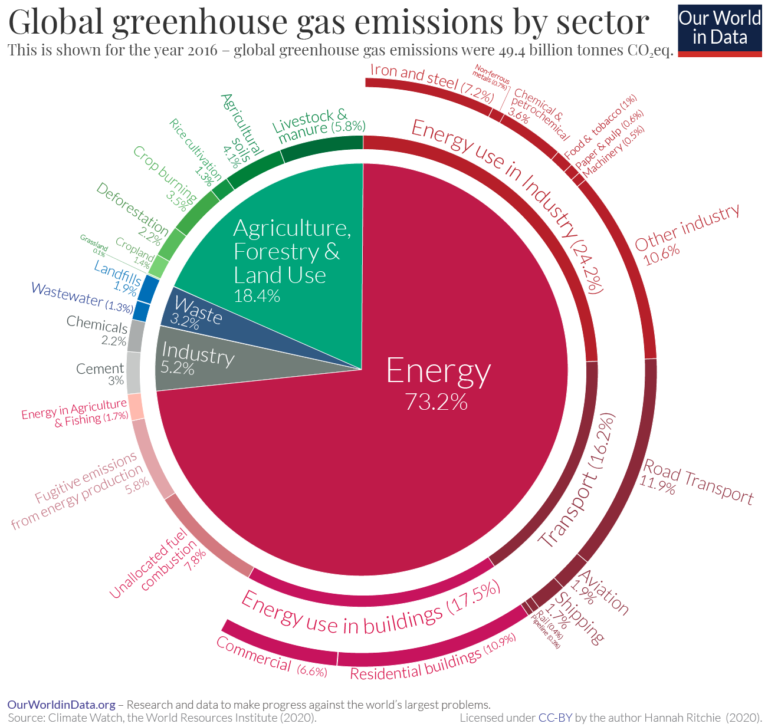
I was surprised to see that waste such as landfills contributed to only 3% of the global GHG emission, whilst energy contributed to 73%, which came from industrial processes, buildings and transport respectively. For a moment I doubted if all the things my household recycled in the past had a real purpose as landfill was only a small contributor according to the chart. I continued to research on the topic and chat with people in the sustainability field, and I am glad to arrive at a decent conclusion – climate change is a complex issue, and it demands a multi-dimension solution; recycling certainly has a part to play, but that alone won’t solve the problem.
When I looked further into the GHG emission chart, I found an interesting revelation that in addition to the 3% from waste, every one of us are actually related to almost all other contributing sectors. Let’s zoom in together:
- Energy use in industry (24%) – we are the ultimate consumers of the products produced.
- Energy use in buildings (18%) – we are the electricity consumers at home, work, school, shops etc.
- Energy use in transport (16%) – we drive or take public transport to travel around.
- Agriculture, Forestry & land use (18%) – we are the consumers of farmed product.
What can we do: change in mindset on resource consumption
You may now realise that the actions we take each day can have knock-on effects in contributing to GHGs hence climate change. Products and services mostly exist because of consumer demand. I firmly believe every single person on this planet earth has the power and a part to play in this multi-dimension solution in combating climate change.
Although solutions to cleaner energies may be for the government and scientists to figure out, we all know it won’t be an overnight solution. However, every one of us can start today by consuming less energy – from simple things like switching off the lights when they are not in use, taking public transport or carpooling where possible, switching to electric vehicles etc. By consuming only what we need, and preferably from sustainable and local producers so they aren’t shipped from the other side of the world, we produce less waste and use less energy – likely saving us some money too!
All these actions are about a change in mindset and re-thinking WHAT and HOW we consume resources – Do we really need to buy what we want? Are they made from sustainable or harmful materials? Do you really need to keep the aircon on when not in the room? Consumers do have a choice, and when we all act towards the same direction, cumulative efforts CAN create impact to reduce GHG emission and influence how products are produced. Knowing this gives us and our children the hope and certainty that we can take an active part in creating a positive impact, instead of sitting back and getting worried or given up hope that nothing can be done by us about climate change.
This was the moment I understood the meaning behind these Rs described earlier, and why 3Rs was evolved to 5Rs (in fact I later discovered there are even other variations of the 5Rs! I trust the acronym varies to suit the audience’s relevance and readiness in adoption.) Be it 3Rs or 5Rs, they all have the same spirit behind them, which is to capture the change in mindset on how we consume and to reduce waste. It is also about making better choices in your life for the only planet Earth we have, so that future generations will still be able to continue enjoy the resources we have today – known as ‘sustainability’.
Sustainability - waste reduction and recycling
Whilst it is certainly important to recycle things that we do not need instead of throwing them in the bin and ultimately to landfills, the recycling process itself also consumes resources. It will be a much better and sustainable solution to reduce waste to begin with.
The 5 Rs make it easy to remember how to achieve waste reduction (in order):
- Refuse anything that would become rubbish especially items with short lifespan – do you really need them or could you do without?
- Reduce consumption of such if you are unable to refuse.
- Reuse what you already have.
- Repurpose your unwanted items and find alternative uses – repair, reform, DIY.
- Recycle if all the above failed – recycle will be the last resort to give it another life, instead of throwing in the bin and going to landfill as waste
Below are some examples relating to plastic bottled water to help with understanding:
- Refuse: Can you refuse consuming bottled water, either buying from shops or complimentary ones? The alternatives would be to bring your own water in reusable bottles, and drink from a cup at home/office with tap/boiled water.
- Reduce: There may be occasions you forgot to bring your own water bottle and feeling thirsty and only option is bottled water – try not to make it a habit.
- Reuse: Find a new use for the plastic bottle after consumption, e.g. use as container for other household items.
- Repurpose: Transform the bottle to a product with higher quality of value, e.g. crafting used bottles into a lamp shade, use as planters in vertical garden.
- Recycle: Instead of throwing into the bin, recycle it so it can be turned into useful resources again.
Now with a better understanding of the GHG contributors and the spirit behind waste reduction, I hope you should be able to answer the question I posed as title to this blog post, “To recycle, or not to recycle?”.
Discussion ideas with your children
Below are some questions you can ask your children to start conversations on the daily things you could do to create impact:
- The shop gave you a free plastic bag after your purchase, do you really need it or can you just place inside your own bag? What happens to this plastic bag after you take it home?
- Could you just drink from the cup instead of from a straw?
- Do you really need a third hairbrush just because it’s a new colour or looks cute?
- Do you need the lights on in your bedroom when you’re having dinner in the dining room?
- Could you just walk or take public transport instead of riding your private car to the next destination?
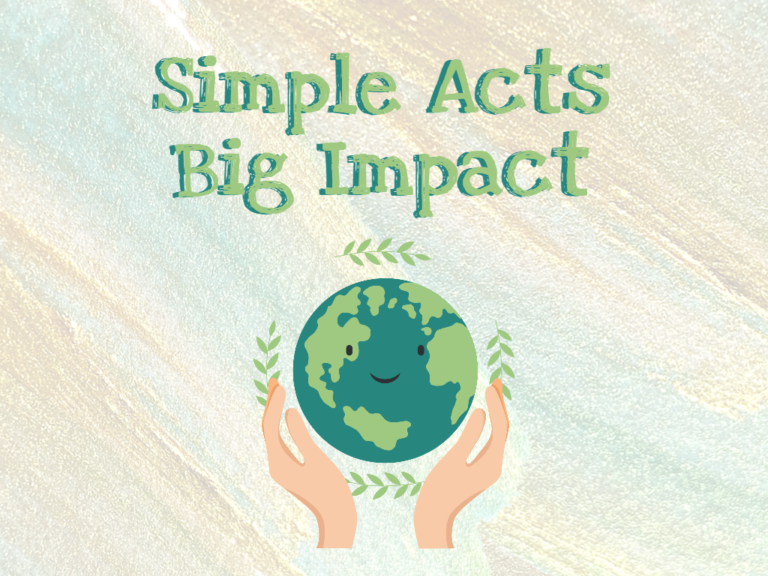
Reading Panda is going green
Reading Panda has also reviewed our internal processes and product offering to identify areas to reduce waste. As much as our customers enjoy reading our parents’ guide that comes with the book boxes, we feel it is more environmentally friendly to issue the parents’ guides in electronic copies going forward. Don’t worry the quality of content will not be compromised, the only change is that instead of paper printouts, they will be sent to you via electronic means, achieving waste reduction at source.
We hope you will support our decision, and together let’s teach our children to make small changes in our daily lives to collectively create big impact to combat climate change!
Here are some useful resources should you want to read up more about climate change and waste reduction:
- UN’s page on COP26: https://www.un.org/en/climatechange/cop26
- GHG emissions by sector (by OWID, a research team based at the University of Oxford): https://ourworldindata.org/emissions-by-sector
- Practical video on 5Rs for kids: https://www.youtube.com/watch?v=xhvhGtkkmKQ
- Zero Waste Malaysia: https://zerowastemalaysia.org/
[1] Source: ‘What was agreed?’ from the UN’s COP26 website
Go back to the top of this blog post, “To recycle, or not to recycle, that is the question.“

